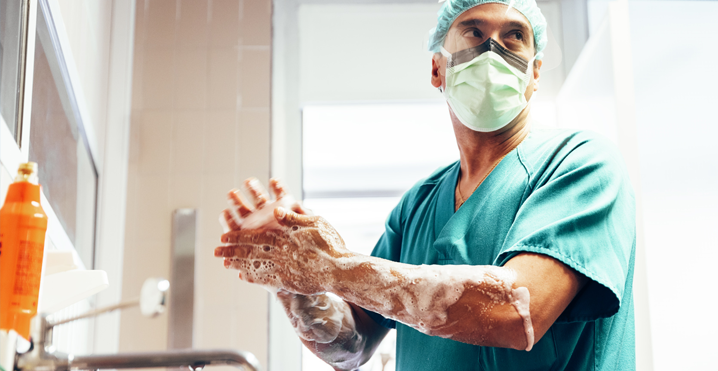
The fight against nosocomial infections is a priority for health facilities. This risk can have dramatic consequences for patients, caregivers and the facility. Digital brings new and concrete means, especially in the field of transmission of information.
As a reminder, a nosocomial infection is part of the infections associated with care, contracted during or after a hospitalization. It is therefore absent at the time of admission of the patient in the establishment and is declared at least 48 hours after admission, or beyond if the incubation period is known and longer. These infections are very frequently linked to interventions: urinary catheterization, central venous catheter, surgical intervention …
Despite the protocols in place in the facilities so as to allow their detection and despite the persons who are committed to the prevention of these infections (health nurse, mobile hygiene unit for example), despite preventive maintenance for equipment, the risks of nosocomial infections affect 5 % of patients (Source INSERM). Every year, in France, 4,000 deaths are the disastrous consequence of this type of infection.
Part of the prevention involves staff training and awareness raising, updating and the learning of hygiene procedures and protocols. Moreover, facilities are required to have their infectious risk control indicators (eg ICALIN), accessible by all (health scope). They can also collaborate with national networks for nosocomial infection surveillance. But other complementary options could be considered for which the computer support of information dissemination would take all its dimension.
Nosocomial infections: centralize information
Smoothing the flow of information and then centralizing it are essential to then implement appropriate actions and enhance the vigilance using feedback.
Provide the information to the right person at the right time - a necessity.
In this nosocomial infections management, caregivers have a fundamental role. It is through their observations and the follow-up of their recordings that the alarm circuit is activated. Therefore, it becomes possible to inform the risk manager, the infectious-vigilant, the hygiene department, the caregivers and all the intervenors within the facility. When approaching a room of a patient identified as carrying infectious risks, the staff must be alerted and shall ensure the implementation and compliance with the prevention and protection measures established by the quality department.
Use NFC technology in order to alert
A company like BlueKanGo, specialized in the digitization of quality and risk processes, especially in hospitals, has been working on these topics for many years. Their solution, which is based on the intensive management of information diffusion workflows, now combines immediate access to information using NFC (Near Field Communication) technology with.
NFC technology coupled with a quality and risk management system can play a decisive role in the transmission of information.
How this translates into practical reality is that caregivers report the infectious condition geolocated by NFC technology. The solution can alert the recipients associated with the workflow, via SMS and / or email. This NFC chip is proving to be relevant as a relay of access to information. Miniature, it can be placed on a simple sticker stuck on the door of a room in order to identify the area concerned by the risk of infection.
Not only does it combine efficiency with respect for the confidentiality of the patient, it also makes it possible to materialize in a simple way the conditions of access to a controlled zone, while minimizing the anxiety of other means of signaling.
What benefits for the caregiver and the risk manager.
.gif?width=251&height=420&name=ezgif.com-crop%20(1).gif)
For the caregiver, it is an easy operation if they are equipped with a smartphone (connected or not to the Internet or the mobile network). Bringing the smartphone closer to the chip will display on the screen the essential instructions for handling this type of patient.
The Quality department will be informed in parallel through the reception of an email for example. They will be able to ensure the smooth conduct of the approach as well as benefit from detailed feedback concerning the environment of the patient, for example the follow-up of the decontamination of the material of this zone, or the follow-up of the traceability of the interventions; and they will also be able to automatically feed the monitoring indicators and the dashboard of implemented actions.
A system that complements the system of care and prevention of nosocomial infections and offers many perspectives when it comes to patient care and risk management of health facilities.
A digital transformation that hospitals can already get through.
. . .




-1.jpg?width=169&name=unnamed%20(3)-1.jpg)
